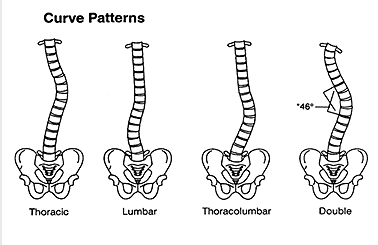
The Myth of Scoliosis Treatments

Scoliosis is a condition where the spine curves abnormally when viewed from the back. There are two types of curves known as the ‘S’-curve and the ‘C’-curve, so called as their resemblance to the shapes of the alphabets ‘S’ and ‘C’.
It afflicts about 2.22% for girls and 0.66% for boys in the age group of 13 to 14 years old1 in Singapore. Given its dramatic visual, it causes alarm and leads sufferers to seek a wide range of remedies, some with dubious claims. Unfortunately, when these dubious claims are challenged, the remedy provider always seems to be able to trot out a successful patient who swears by it. How do they do it?
Why is it that various remedies are able to claim success in curing scoliosis when orthopaedic surgeons vehemently defend its incurability, short of surgical interventions or wearing braces? And physiotherapists say at best, it can be ‘managed’, never cured.
Postural And Idiopathic Scoliosis
This difference in opinion is mainly due to the fact there are at least two types: postural and idiopathic. There are other types, but we won’t cover them here, namely congenital (caused by vertebral anomalies present at birth), or developed as a secondary symptom of another condition, such as cerebral palsy or spinal muscular atrophy.
Postural Scoliosis
Let’s start with postural scoliosis. Almost all of us are able to curve our spine to the side into the ‘C’-shape simply because bending sideways. The spine straightens when we stand back up. Their muscles aren’t able to either release their hold in the side-bend position, or to pull back from the side-bend position.
This happens when the muscles on one side of the back are too tight. This pulls the spine away from the centre line or when one side is too weak to pull the spine back towards the centre line. In short, the postural muscles managing the spine’s position are not working well. This happens as a result of repeated poor posture over time.
Idiopathic Scoliosis
The far more serious case is idiopathic scoliosis. Despite the ominous sounding name, idiopathic simply means ‘arising on its own’ or more accurately, we don’t know the cause. Today, research2 is beginning to reveal a genetic link with scoliosis with the discovery common genetic markers amongst sufferers.
Treating Postural Scoliosis
It is treatable by correcting the muscular imbalance and tension. A simple muscular or myofascial ‘release’ of the tight muscles pulling the spine away from the centre-line will help the client stand a little straighter. The following approaches usually help to overcome postural scoliosis
- Adopting the correct posture,
- Improving joint mobility,
- Reducing the muscle tightness and
- Improving the muscle strength.
Why Treatments For Idiopathic Scoliosis Seem To Work
Repeated treatment to the postural scoliosis component will lead to a gradual improvement of the spinal curvature.
It is also positive news to others that the overall curvature could be much better even they are not ‘cured’. To date, only surgery and bracing have been shown to have a significant impact on idiopathic scoliosis.
Reference:
- Idiopathic scoliosis in Singapore schoolchildren: a prevalence study 15 years into the screening program, Spine. 2005 May 15;30(10):1188-96.
- CHD7 Gene Polymorphisms Are Associated with Susceptibility to Idiopathic Scoliosis, The American Journal of Human Genetics, Volume 80, Issue 5, 957-965, 1 May 2007
Related Articles
- What is Scoliosis? Cobb Angles and Diagnosis Scoliosis is a condition related to back pain physiotherapy and is described as a progressive 3-dimensional curvature of the spine…
- Idiopathic Scoliosis Classification This article is a follow-up on the series of idiopathic scoliosis that was previously published. In this article, we…
- Busting the Myth about Posture and Scoliosis Scoliosis, or better known as the abnormal curvature of the spine, is a life-long spinal condition that results in…
- Golf with Back Pain: 3 Common Conditions & How to… Golf is a popular sport that has been around for decades or even centuries. Though golf is widely known for…
- How Many Types Of Braces Are Available For Scoliosis? In general, there are 2 main types of braces for scoliosis: a hard brace and soft brace. Hard braces…
